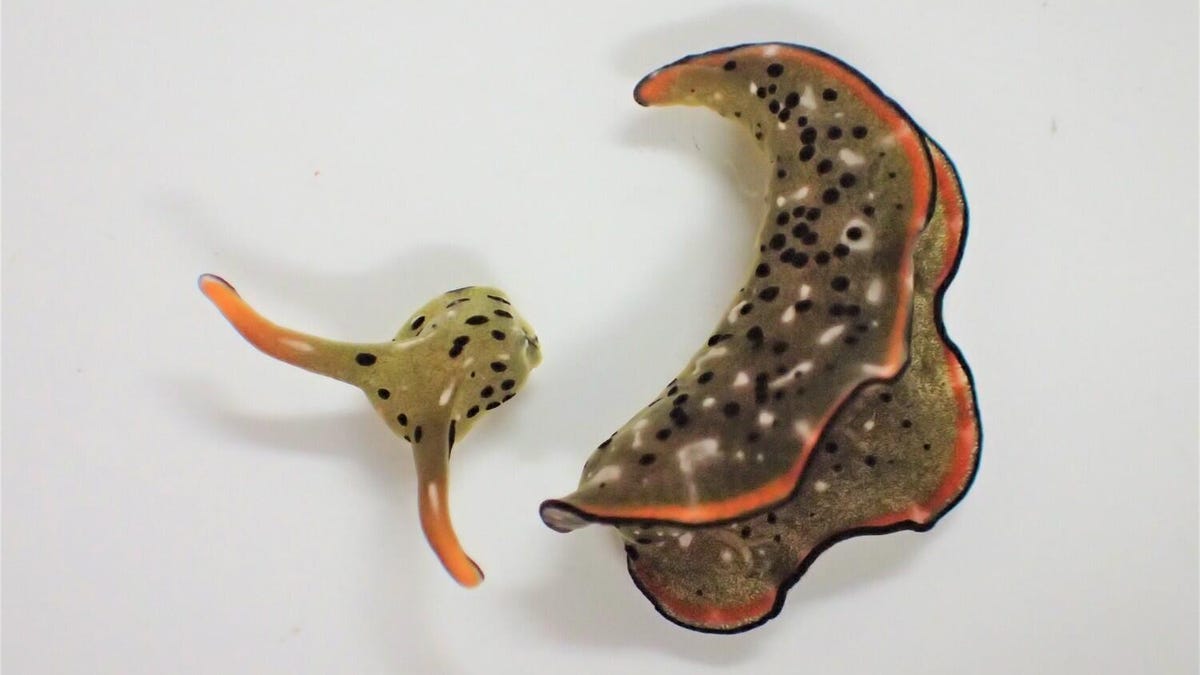These sea slugs cut off their own heads and grow a whole new body
Does that make them the Terminators of the animal world?
Most animals can't lose their bodies and still survive. Two species of sacoglossan sea slugs definitely aren't most animals. A team of researchers observed sea slugs that severed their own heads and then regrew their bodies complete with hearts and other internal organs. The action of shedding a body part is called autotomy. It's what lizards do when they lose a tail for self-preservation.
Dropping an entire body is much more dramatic than losing a tail. "We thought that it would die soon without a heart and other important organs, but we were surprised again to find that it regenerated the whole body," Sayaka Mitoh of Nara Women's University in Japan said in a Cell Press statement Monday. Mitoh is lead author of a study on the sea slugs published in the Cell Press journal Current Biology.
The severed sea slug heads were able to feed within hours.
The regenerating sea slugs were younger individuals. It took about a week to regrow the heart and they had completely regenerated their bodies within three weeks. The researchers suggest there may be "stem-like cells" where the neck severs that allow for the regrowth.
The younger sea slug heads were able to move and feed on algae shortly after separation, which seems to have been the key to their survival. Older slug heads didn't feed.
The unusual animals take a cue from plants. "The sea slugs in question already were unique in that they incorporate chloroplasts from algae they eat into their own bodies, a habit known as kleptoplasty," said Cell Press. "It gives the animals an ability to fuel their bodies by photosynthesis."
The ability to regrow a body isn't unheard of. Some species of jellyfish can regenerate after an injury. The self-decapitation part of the sea slugs' process adds to the mystery though. The researchers suggest the action may be a way to get rid of internal parasites, but the impetus is unclear.
The surprising body regeneration process is already giving scientists ideas for further studies. Said Mitoh, "As the shed body is often active for months, we may be able to study the mechanism and functions of kleptoplasty using living organs, tissues, or even cells."


